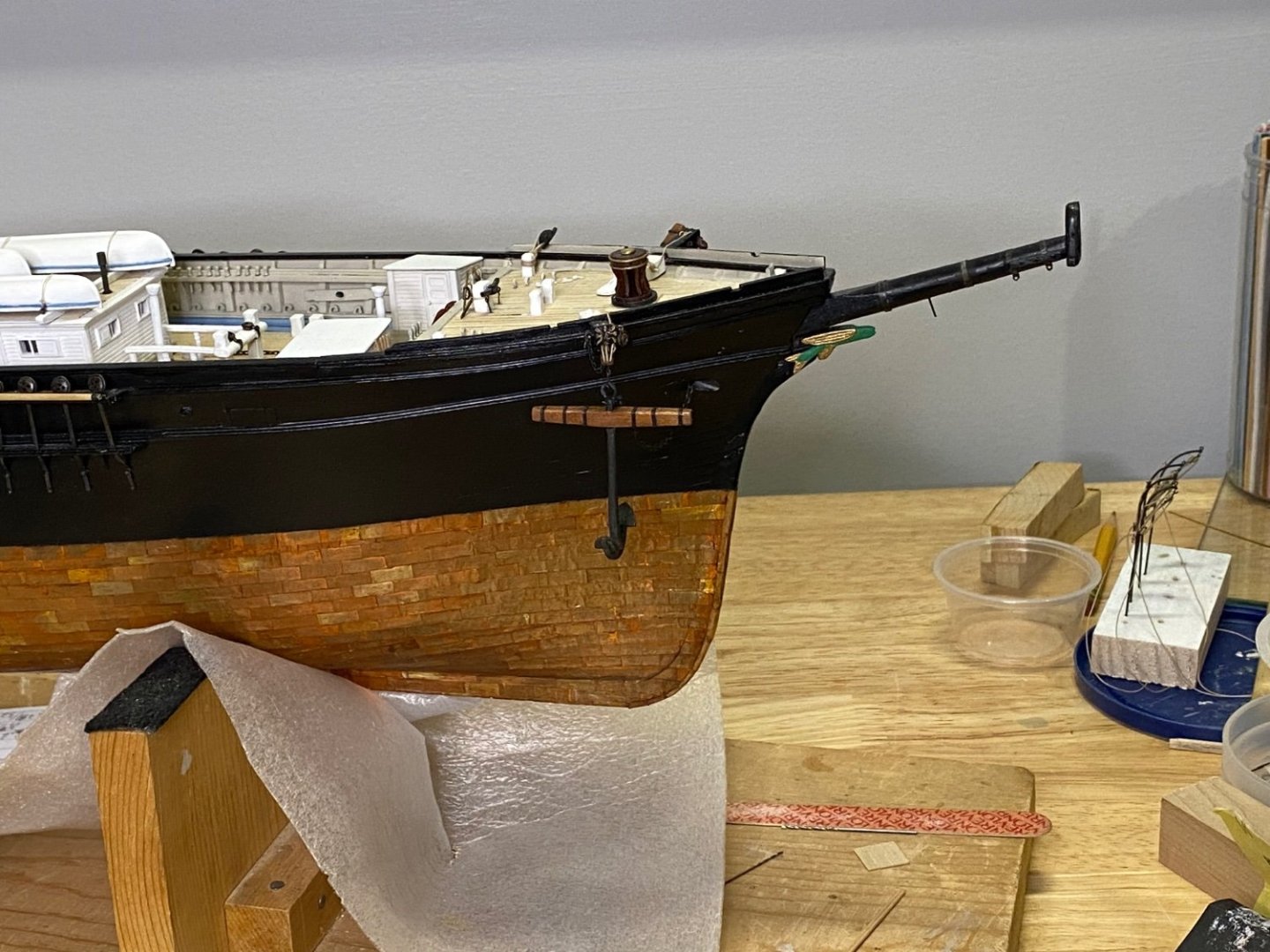
Rick310
NRG Member-
Posts
753 -
Joined
-
Last visited
Content Type
Profiles
Forums
Gallery
Events
Everything posted by Rick310
-
Ed, On the YA, was the he mizzen mast a single tree or was it a made mast on your model? If a single tree, why the decision to place mast bands? I seem to recall that I read somewhere that bands were place on single tree mast for strength. I am currently building the Flying Fish and it supposedly had a single tree mast and the plans show no bands on the mizzen. However, 2 contemporary paintings ( Buttersworth and China Trade) show bands on the mizzen. what to do? Rick
- 3,618 replies
-
- young america
- clipper
-
(and 1 more)
Tagged with:
-
Really looks great George!! You did a magnificent job!! Rick
- 602 replies
-
- Flying Fish
- Model Shipways
-
(and 2 more)
Tagged with:
-
Really well done!! Congratulations!! Rick
- 166 replies
-
- Maine
- BlueJacket Shipcrafters
-
(and 1 more)
Tagged with:
-
Good luck with your build. Nic’s (Mr Bluejacket) model of the Red Jacket is beautiful!! Maybe Nic can send you pictures. I use his model as a reference for my Flying Fish! Rick
- 152 replies
-
- Red Jacket
- Marine Model Company
-
(and 2 more)
Tagged with:
-
Here are some better pictures of the bow showing more of sweeping arc of the stem and figurehead . Rick
- 343 replies
-
- Flying Fish
- Model Shipways
-
(and 1 more)
Tagged with:
-
Thanks George!! you did a magnificent job on your Flying Fish!! I also really appreciate your blog as I have used it for a reference frequently as I slowly progress! Thanks again for your kind words. Rick
- 343 replies
-
- Flying Fish
- Model Shipways
-
(and 1 more)
Tagged with:
-
Rob, Thanks for your input. In examining both contemporary paintings, I don’t see a definitive naval hood on the Flying Fish. Given that there are several decades separating the launch of the FF and Glory, could the naval hood represent a further development of the bow/ stem/ cut water of Mc Kay’s ships? Certainly Glory’s is substantial. On my model, I tried to show an extended stem/ cut water to more closely match the Buttersworth’s painting, ie the graceful arc of the stem as opposed to the stem the plans show which is more straight up. Rick
- 343 replies
-
- Flying Fish
- Model Shipways
-
(and 1 more)
Tagged with:
-
I bought the Byrnes table saw 16 yrs ago and it is worth every penny!! Absolutely could not make the Flying Fish without it!! I’ ended up milling almost all of my wood stock as the wood supplied with the kit is inadequate! Jim Brynes takes an occasional break but his table saw is still available, Rick
About us
Modelshipworld - Advancing Ship Modeling through Research
SSL Secured
Your security is important for us so this Website is SSL-Secured
NRG Mailing Address
Nautical Research Guild
237 South Lincoln Street
Westmont IL, 60559-1917
Model Ship World ® and the MSW logo are Registered Trademarks, and belong to the Nautical Research Guild (United States Patent and Trademark Office: No. 6,929,264 & No. 6,929,274, registered Dec. 20, 2022)
Helpful Links
About the NRG
If you enjoy building ship models that are historically accurate as well as beautiful, then The Nautical Research Guild (NRG) is just right for you.
The Guild is a non-profit educational organization whose mission is to “Advance Ship Modeling Through Research”. We provide support to our members in their efforts to raise the quality of their model ships.
The Nautical Research Guild has published our world-renowned quarterly magazine, The Nautical Research Journal, since 1955. The pages of the Journal are full of articles by accomplished ship modelers who show you how they create those exquisite details on their models, and by maritime historians who show you the correct details to build. The Journal is available in both print and digital editions. Go to the NRG web site (www.thenrg.org) to download a complimentary digital copy of the Journal. The NRG also publishes plan sets, books and compilations of back issues of the Journal and the former Ships in Scale and Model Ship Builder magazines.




